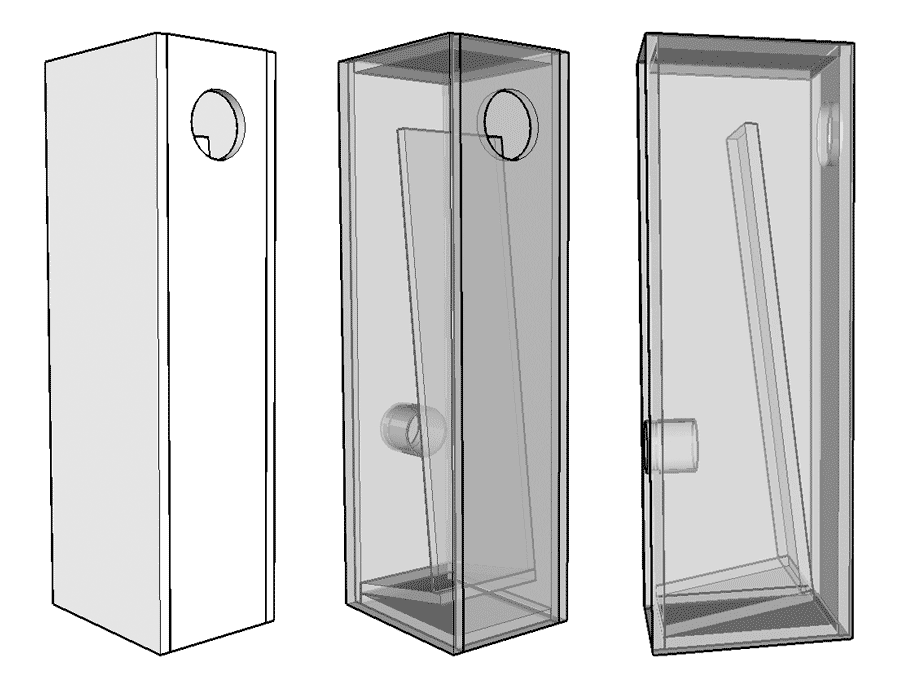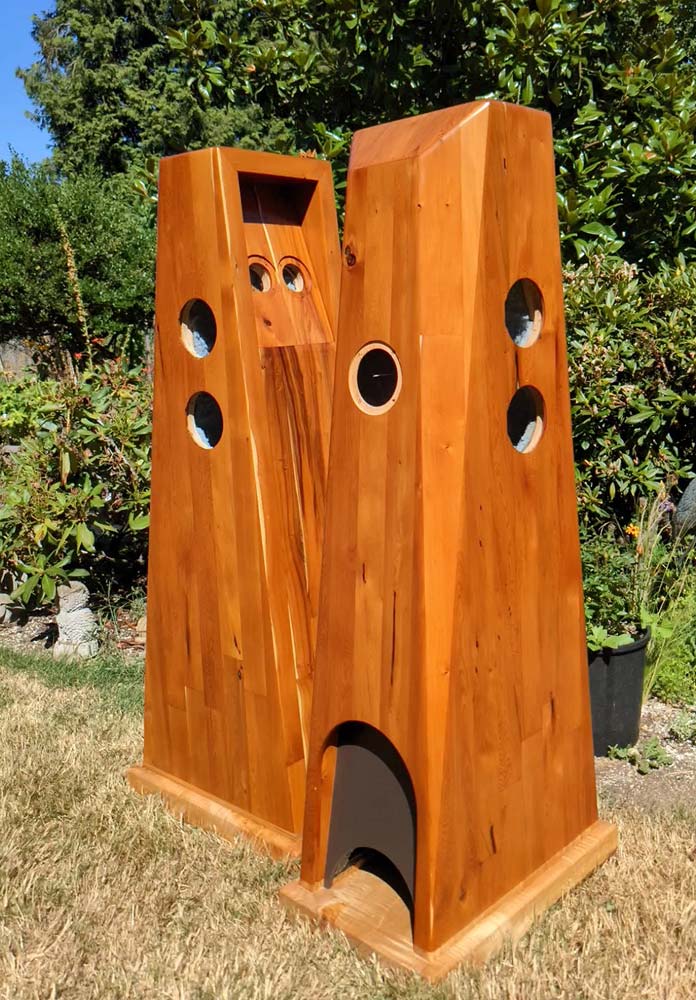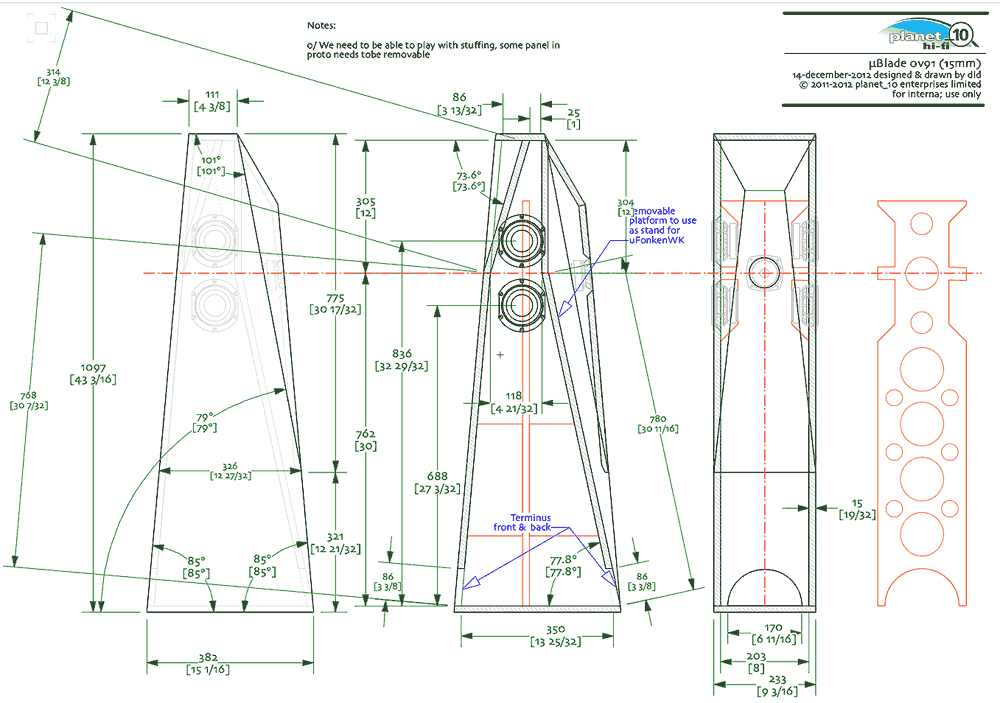Uh, whoops. Ever feel your face turn red over something you posted? I think I'll go clean out the garage...
I have days like that. Actually, they tend to happen on -oh, roughly a minute by minute basis. If I'm doing well.

How would you do it then? I am looking for inspiration.Yes, I have looked at Troels' TLs and noted that is not how I would do it.
The world of diy speakers is full of overengineered , overcomplicated, pieces of art that have been a life long projects for the author, are a size of a house and cost as much as a house. But when you want to build just a pair of loudspeakers for your own living room and you look which project you could copy for yourself, you find nothing.
I am a diy-er, I have a shed equipped with tools for basic woodwork, but I also have a job and my own life. But still, I want to order plywood panels cut to the size and just assembly and finish the boxes myself. I do not want to spend more than a few weekends on that. I want to build is a box that can serve as a basis for a few more projects in the future. I want it to be practical, functional and looking good enough in my living room.
Any inspirations for the box are welcomed.
overcomplicated
A good descritption of Troels line.
While getting the driver at appropriate height when one considering the Zd, is tricker in a Voigt than a straight or decresing taper, even Scott and Nandape’s (independently derived) Voigt folding is the “most complicated” i have drawn (ignorning abandoned thots, and specialized applications):

And one of the specialized applications:

For some inspirtion this collection of examples may help — done over 2 decades ago, more examples (including Troels) have been done since.
https://www.t-linespeakers.org/design/foldings/index.html
dave
Last edited:
how about the so-called "aperiodic" closed box where the system's resonant Z peak is damped? Are there instances where that approach has some advantage vs TL and closed box?
I like how it makes use of the "Z" axis. Often a speaker is pulled out into the room from the wall, nothing back there behind it anyway. WAF I suppose debatable.And one of the specialized applications:
Thanks. Got some good cleanup / org initiated, preparing for a dump run; sometimes "pushing a broom"... ;')I have days like that.
And you call that "simple"?And one of the specialized applications:
....
For some inspirtion this collection of examples may help — done over 2 decades ago, more examples (including Troels) have been done since.
....
The folds by themselves can be done pretty much anyway you like. The difficulty lies in arranging it all in a sensible 3 way box.
3-way for me is a WAW with subwoofers. Still tricky sometimes, these were also convoluted.


For a more convential 3-way woofer placement height-wize is not overly critical, mid/tweeter is. Finding airspace for the mid can sometimes be an issue.
dave


For a more convential 3-way woofer placement height-wize is not overly critical, mid/tweeter is. Finding airspace for the mid can sometimes be an issue.
dave
How would I do it has been asked. Dave is correct, too complicated and Troels seems to be using traditional ideas about TLs. Well you can make TLs as complicated as you like, but I prefer the KISS principle. Keep it simple, so straight MLTL is my preference, and I have made many, and refurbished some with new drivers. I make the front baffle removable so you can keep the cabinet and upgrade to another driver later with a new baffle. The back and the port are also removable so I can adjust the port length and the stuffing. Driver technology is always changing with hopefully better sound, and if you have a very nice cabinet it is silly to dump it and make another. My cabinets are solid wood (higher WAF, must keep her happy), so I don't want to chuck them out, especially if the other half likes the cabinet. This approach works best with full range drivers, but can be used for multi way systems if you can work out a way to add a mid enclosure, and of course you will need to model the new driver to see if it will work in the old cabinet. There are many examples of straight MLTLs big and small on the Mark Audio web site (thanks Scott). Complicated cabinets can easily trash the WAF and are more difficult to build and trickier to use solid wood ensuring that the wood won't split with changes in humidity. Keep it simple.
Last edited:
What software do you use to make the drawings?
I use Vectorworks on a Mac.
dave
- Home
- Loudspeakers
- Multi-Way
- Transmission Line vs. Sealed enclosure